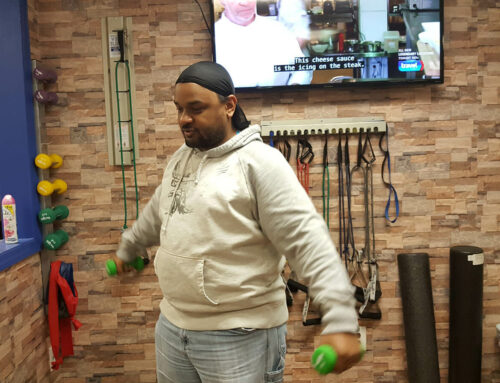
Physical therapists go to a lot of different locations to work with their patients. Those locales may include hospitals, nursing homes, offices, and gyms.
Here are the people who can benefit from physical therapy and how it can help them.
What It Is
First, it might be beneficial to learn what physical therapy is. There are several types of it – all with the purpose of working with a patient to regain their range of motion. The physical therapist does an evaluation and then begins treatment, which falls into three different categories.
- Assisted – With this one, the physical therapist does all the work, guiding the patient through all the exercises. They may be pulling or pushing. It may be because the patient doesn’t have the strength to do anything or can’t move themselves.
- Active-assisted – Here, the physical therapist works alongside the patient, who is able to do some things on their own but may need assistance with other exercises. He or she is well on the way to the third type of physical therapy.
- Active – This is the main goal of physical therapists – getting their patients to a state where they can do their exercises without any help. They want the patient to be able to continue a program on their own so that the risk of a recurring injury is minimal.
Specialties
People of all ages can benefit from doing physical therapy. They may just need to see a specialist. Here are some of those:
- Pediatric – Adolescents, children and infants that have conditions like cerebral palsy, spina bifida, and other conditions that affect their musculoskeletal system. They also address things like developmental delays.
- Geriatric – This is on the other side of the age spectrum. These physical therapists work with those who are senior citizens. They help them regain mobility and functional ability. Patients have all kinds of conditions, ranging from Alzheimer’s to arthritis to balance issues to osteoporosis. People who have had hip or other joints replaced benefit from seeing this type of physical therapist.
- Neurological – Patients who have conditions that affect the brain, ranging from traumatic brain injuries to strokes can work with this physical therapist. The main goal here can vary widely – from getting limb responsiveness back to keeping muscle atrophy at bay.
- Orthopedic – These physical therapists work with people who have conditions ranging from bursitis to fractures to sprains or are recovering from surgery. They do joint mobilization, mobility training, and strength training.
- Cardiovascular – The main goal of these physical therapists is to help patients who have had cardiopulmonary conditions – like chronic obstructive pulmonary disorder (COPD) – regain stamina and endurance.
Other specialties can include helping people with wound care and others who have fluid build-up in cases like lymphedema. There are physical therapists who also aid patients who have pelvic issues and help them regain control of urinary or bowel movements.
Methods
Besides traditional exercise equipment, there are other things that a physical therapist can use to get results. They include:
- Electrical stimulation – This is also called e-stim. The physical therapist places electrodes on the patient’s skin and it helps increase functional capabilities and also possibly reduce pain. They may do this in conjunction with the patient taking anti-inflammatory medication.
- Ultrasound – The purpose here is to increase blood flow, which then can improve healing of tendons, tissues, and muscles. The ultrasound heats the intended area that needs it.
- Heat – This works like the above, but it can work as moist heat therapy, where things like hot water bottles, steam towels, heating packs that have been moistened or time in a warm bath, are used to heal the intended area.
- Light – Both light and lasers can be used here to treat certain conditions that include migraines to repetitive stress injuries – like carpal tunnel syndrome.
Uses/Benefits
When people think of physical therapy, they think that it means that it is only for fixing a problem or condition. That’s not always the case. It can also be used to be preventative. Let’s take the balance issue. As people get older, keeping their balance can be more and more difficult. Their doctor may think that a possible problem lurks ahead and prescribe physical therapy so that a possible fall may be averted.
Other things that people can use physical therapy for:
- Managing pain
- Avoiding Surgery
- Avoid needing pain medication
- Loosening tight muscles – Having tight muscles can make things quite difficult. Tight hamstrings can cause back problems since they are pulling on back muscles. Physical therapy can make it much easier for the patient.
Physical therapy is a very broad field but as you can see, a broad spectrum of the human population can benefit from it. Getting it involves knowing what insurance will allow for, the geographic location, and what specialty is needed.
Phoenix Physical Therapy Rehabilitation PLLC has managed to aid a lot of people in their quest to regain mobility or recovery from conditions ranging from back pain to general weakness. They have three locations, one in Brooklyn, another in Rosedale, and a new one in Levittown. Give them a call at 347-733-1916 to see what they can do for you.
Published By:
Phoenix Physical Therapy
Rosedale Location
23520 147th Avenue, Suite 1,
Rosedale, NY, 11422
Levittown Location
2920 Hempstead Turnpike,
Levittown, NY 11756
Brooklyn Location
7510 4th Ave., Suite 3,
Brooklyn, NY, 11209
Phone: (347) 733-1916







